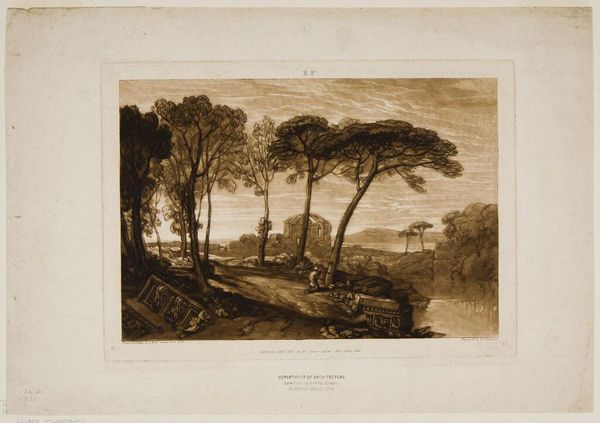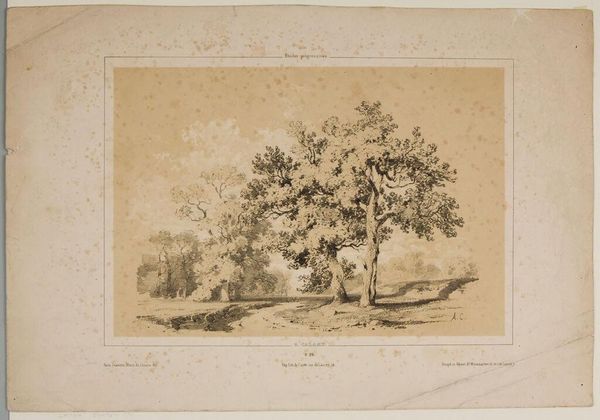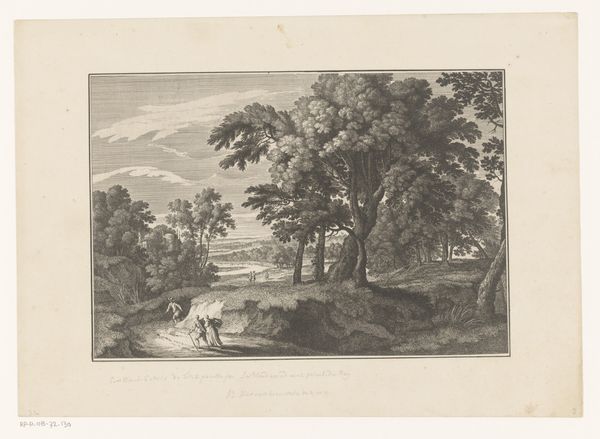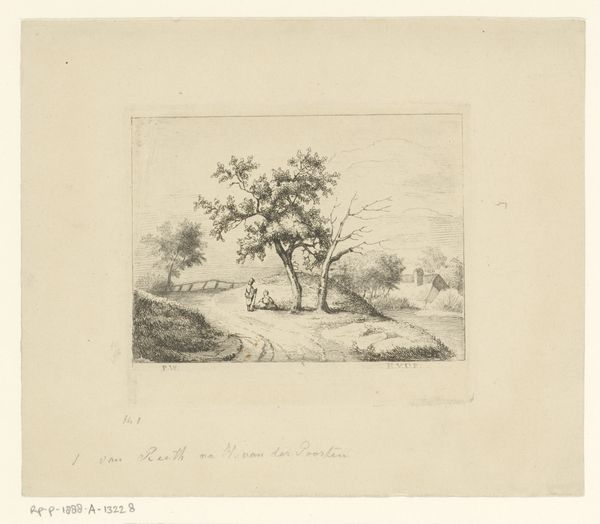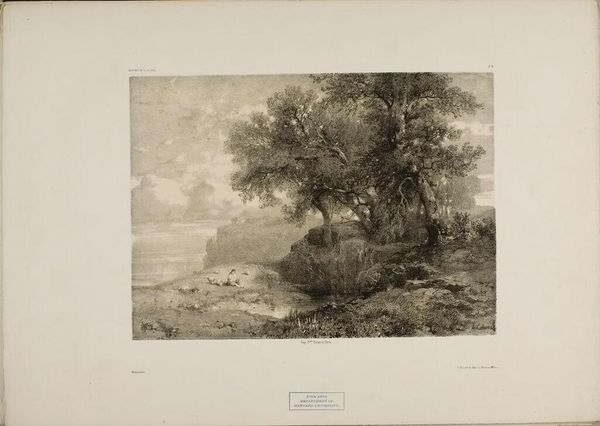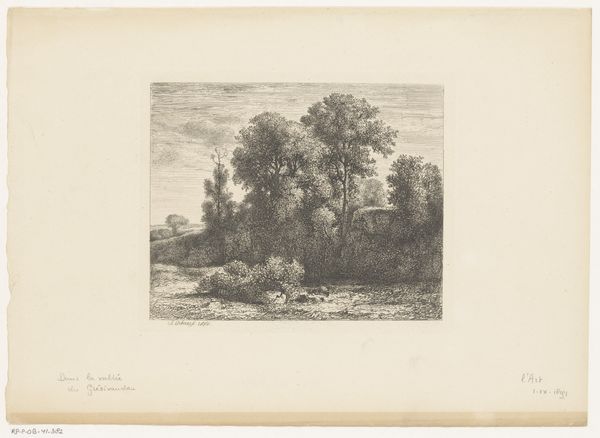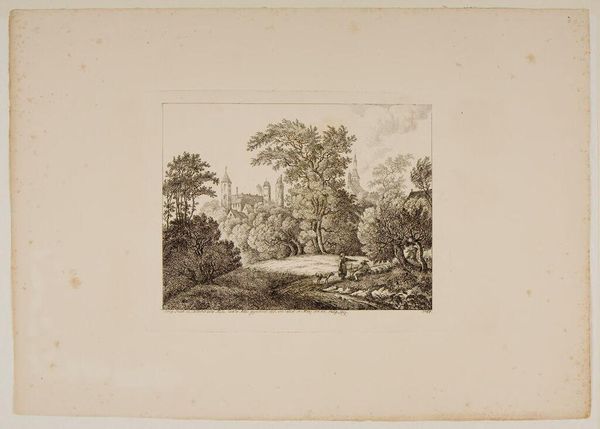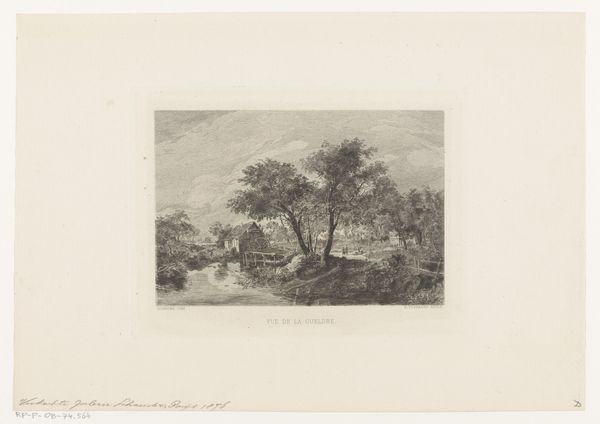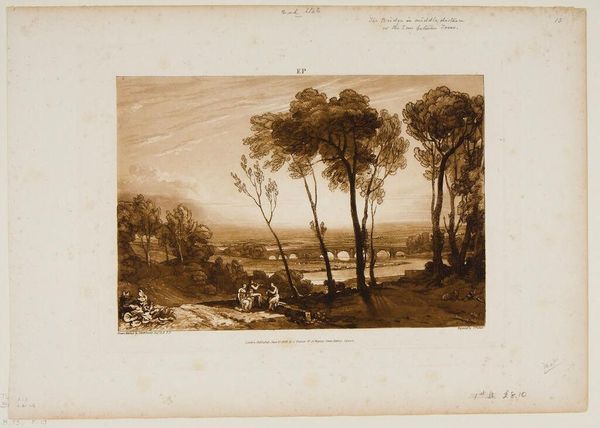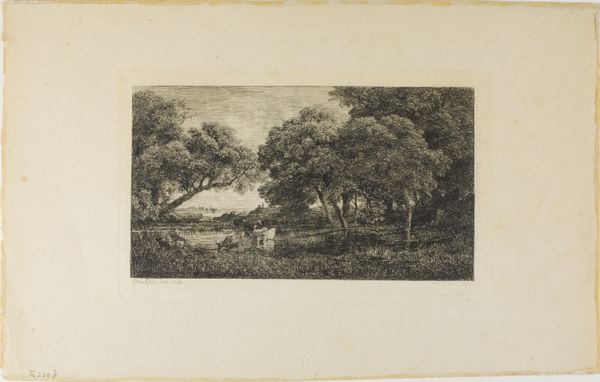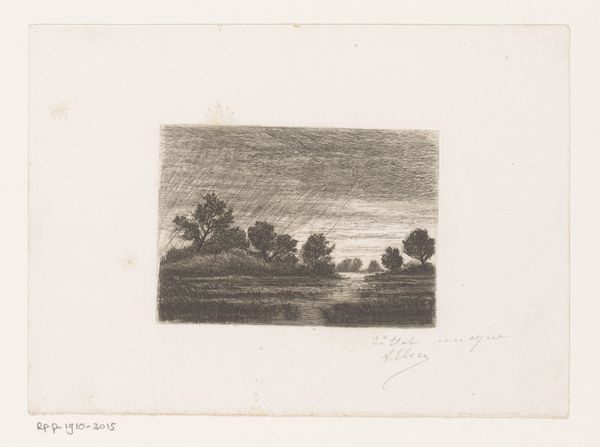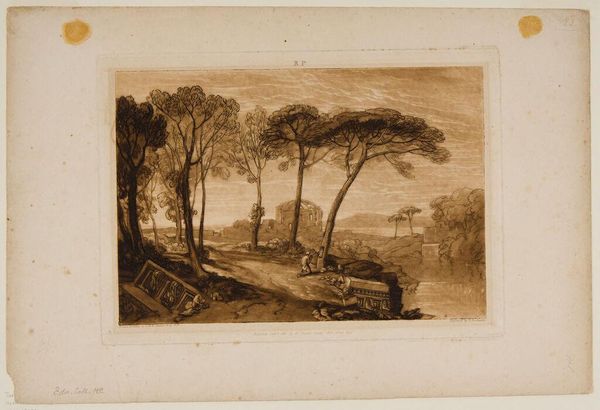
Copyright: CC0 1.0
Editor: This is William Say's "Glaucus and Scylla," an undated print housed at the Harvard Art Museums. I’m struck by the composition, the way the light and shadow create such a dramatic scene. What do you see in the formal arrangement of elements here? Curator: Indeed, the contrast is key. Notice how the artist uses a monochromatic palette to emphasize form and texture. The rugged coastline is rendered with a clear sense of depth, achieved through careful gradations of tone and the strategic placement of shapes. Editor: So, it's not about the narrative then, but more about how the landscape is presented formally? Curator: Precisely. It’s the structure of the image itself—the interplay between light and shadow, the balance of forms—that constitutes its primary meaning. The medium itself contributes; consider the textural nuances afforded by the printing process. Editor: That's a great point. I see now how the emphasis on form elevates the landscape. Thanks for highlighting that!
Comments
No comments
Be the first to comment and join the conversation on the ultimate creative platform.

